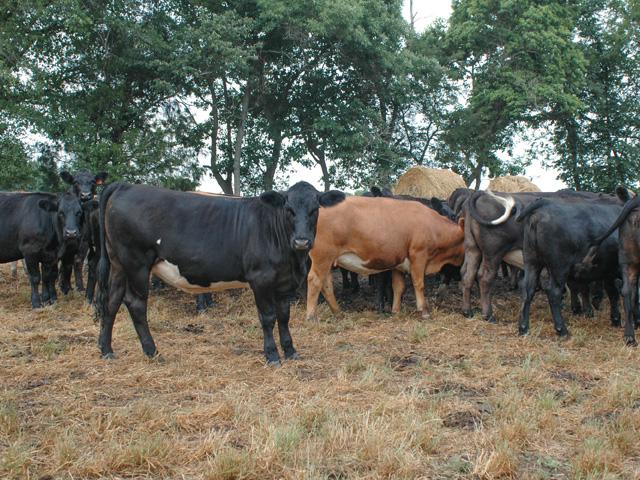Culling in a Drought
Early Preg Check Helps Sort Out Culls as Drought Worsens
Limited feed resources are pushing ranchers across drought-stricken areas into decisions no one really wants to make -- namely culling the cow herd.
There are always a few obvious choices when it comes to culling, like open cows, or those with a bad temperament. This year, though, producers may be able to save some resources by making that decision a little sooner with early preg check.
Janna Block, a livestock systems specialist at North Dakota State University (NDSU), reminded producers in a recent report that cows can be checked as early as 28 to 30 days after the breeding season ends. In areas where forages have dried up and feed prices continue to climb, the sooner open cows can be moved out, the more groceries remain for the rest of the herd.
There are three standard methods to preg check cows: rectal palpation, ultrasound, and blood-based preg tests. The rectal palpation can be done as soon as 40 days post breeding, but Block said it is most accurate at the 55- to 60-day mark. Ultrasound can be used as soon as 28 days post breeding. Blood-based preg tests can be used as early as 28 days post breeding.
NDSU's Gerald Stokka, Extension veterinarian, said every method has advantages and disadvantages.
"An experienced rectal palpatory can identify reproductive issues such as uterine infections and the presence of cysts or other issues," he said. "Ultrasound can be used to estimate fetal age and detect the presence of multiple embryos. In addition, it can be used to determine fetal sex when performed around 55 to 60 days after conception. Blood-based tests can be collected and submitted by producers, but it may take a week or more to receive results."
P[L1] D[0x0] M[300x250] OOP[F] ADUNIT[] T[]
SEVEN STEPS TO A CULL
In addition to early preg checks, Glenn Selk, Oklahoma State University Emeritus Extension animal scientist told DTN in an earlier pre-retirement interview how important it is for producers to recognize that culls from an operation represent about 20% of the gross income received.
His assessment for deciding whether to cull a cow, or keep her, was built around seven steps:
1. AGE. Think about longevity. Selk pointed to data from large ranches in Florida that indicate cows are consistent rebreeders through about eight years of age, with the most consistent decline after the age of 10. As a cow reaches her 12th birthday, Selk advised culling before she had health issues or got into poor body condition.
2. CANCER EYE. This is a common reason for condemned beef carcasses, and eye tumors often start as small pinkish growths. Look for this, as well as for heavy wart infestations around the eye socket.
3. FEET AND LEGS. This one is obvious, and cows with issues here should be considered early for culling. Selk reminded producers to follow required withdrawal times post-treatment.
4. BAD UDDERS. A study at OSU found cows with one or two dry quarters had calves with severely reduced weaning weights (50 to 60 pounds). This is also a heritable trait. Another fault are large, funnel-shaped udders with weak suspension.
5. BODY CONDITION. Cull a cow before body condition drops to get the most in terms of salvage value. Selk added that as a cow weakens and can't stand for long periods, there tends to be more bruising, excessive carcass trim, and increased carcass condemnations.
6. TEMPERAMENT. If she's wild, don't wait to put wheels under her.
7. OPEN COWS. If they don't fit your preferred calving season, it's a good call to cull open cows, especially this year when the cost of carrying them is so high.
Victoria Myers can be reached at vicki.myers@dtn.com
Follow her on Twitter @myersPF
(c) Copyright 2022 DTN, LLC. All rights reserved.






